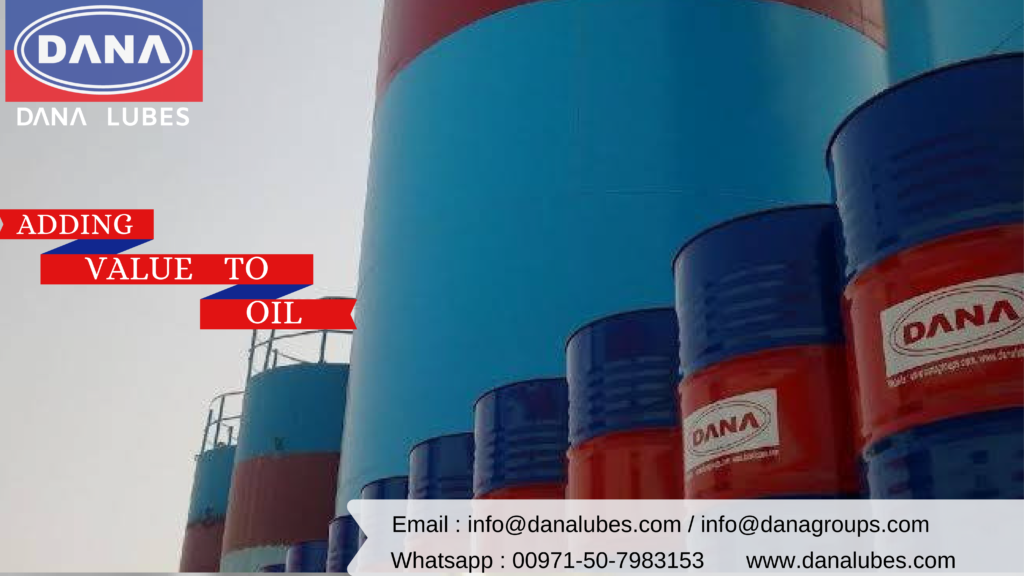Metal cutting fluid is a type of coolant and lubricant designs specifically for metalworking processes, such as machining and stamping. There are various kinds of cutting fluids, which include oils, oil-water emulsions, pastes, gels, and air or other gases. They form from petroleum distillates, animal fats, plant oils, water, and air, or other raw ingredients. Most metalworking and machining processes can benefit from the use of cutting fluid, depending on the workpiece material. Common exceptions to this are cast iron and brass, which may machine dry. Lubricants reduce the friction or wear between tool and work, while coolants carry away the heat generates during the deformation of the metal. Cutting fluids help to achieve a better surface finish and tighter dimensional control.
In the metal cutting process heal is generating due to the following actions:
- Plastic deformation of the metal at the shear zone.
- Friction between chip and rake surface of the tool.
- Rubbing action between work and the flank surface of the tool.
Function of Metal Cutting Fluid
Cutting fluids consist of those liquids and gases that apply to the tool and the material being machined to facilitate the cutting operation.
- To prevent the tool from overheating, i.e. so that no temperature reaches where the tool’s hardness and resistance to abrasion reduce, thus decreasing the tool life.
- For keeping the work cool, preventing machining those results in inaccurate final dimensions.
- To reduce power consumption, wear on the tool, and the generation of heat, through affecting the cutting process. This investigation wishes to establish a relationship between the surface chemistry of the lubricants involved and how they can accomplish reducing the contact length on the rake face of the tool where most of the heat during cutting produces.
- For providing a good surface finish on the work.
- To prevent corrosion of the work, the tool, and the machine.
Properties of Cutting Fluids
- High thermal conductivity for cooling
- Good lubricating qualities
- High flash point, should not entail a fire hazard
- Must not produce a gummy or solid precipitate at ordinary working temperatures
- Be stable against oxidation
- Must not promote corrosion or discoloration of the work material
- Must afford some corrosion protection to newly formed surfaces
- The components of the lubricant must not become rancid easily
- No unpleasant odor must develop from continued use
- Must not cause skin irritation or contamination
- A viscosity that will permit free flow from the work and dripping from the chips.
Types of Metal Cutting Fluid
Cutting fluids divides into four main categories:
- Water miscible or water based fluids
- Straight or neat cutting oils
- Gases
- Paste or Solid Lubricants
Water miscible or Water based fluids:
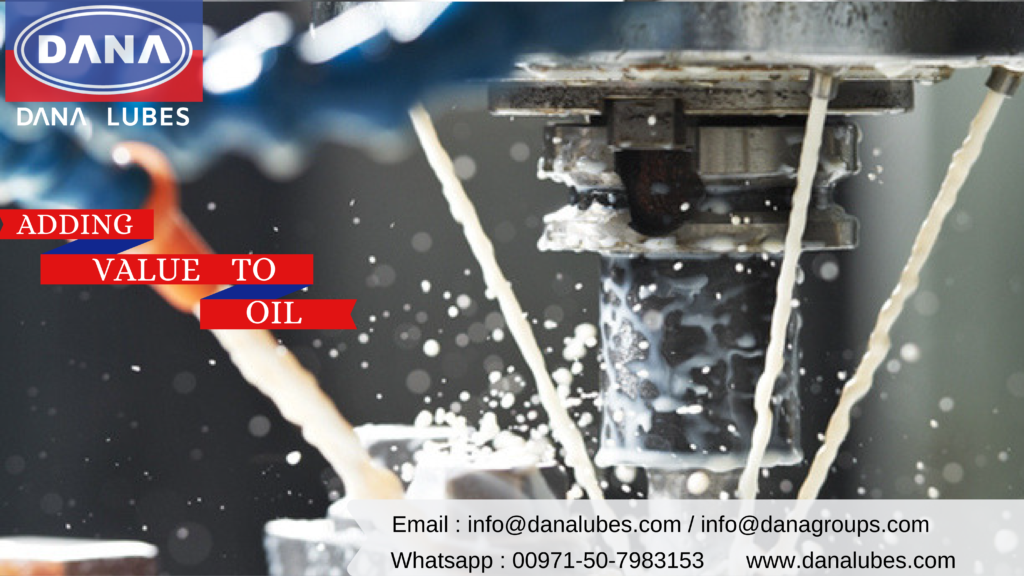
The water-based fluids act mainly as coolants and the neat cutting oils act mainly as lubricants. There are many variants of both types. Fatty acids incorporates in the neat oils. Both the emulsions or soluble oils as they are also called and the neat oils, contain chlorine and Sulphur additives that improve lubrication under extremely difficult conditions.
Emulsion Cutting Fluids:
Emulsifiers are chemical substances that cause suspension of tiny oil droplets iii the water. Additives are corrosive resistance chemicals or coupling agents. Coupling agents provide a white emulsion with no oil or cream separating out after mixing with water 5% dilution level being the most common dilution level. These fluids have average lubricating abilities and good cooling properties. Soluble oils are suitable for light cutting operations on general purpose machines were low metal remove rates used.
There are generally three types of liquids: mineral, semi-synthetic, and synthetic. Semi-synthetic and synthetic cutting fluids represent attempts to combine the best properties of oil with the best properties of water with the help of suspending emulsified oil in a water base. These properties include: rust inhibition, tolerance of a wide range of water hardness, ability to work with many metals, resist thermal breakdown, and environmental safety.
- Mineral oils, which are petroleum-based, first saw use in cutting applications in the late 19th century. These vary from the thick, dark, sulfur-rich cutting oils used in heavy industry to light, clear oils.
- Semi-synthetic coolants, also called soluble oil, are an emulsion or micro emulsion of water with mineral oil. These began to see use in the 1930s. A typical CNC machine tool usually uses emulsified coolant, which consists of a small amount of oil emulsified into a larger amount of water through the use of a detergent.
- Synthetic coolants are usually water-based.
Straight or neat cutting oils:
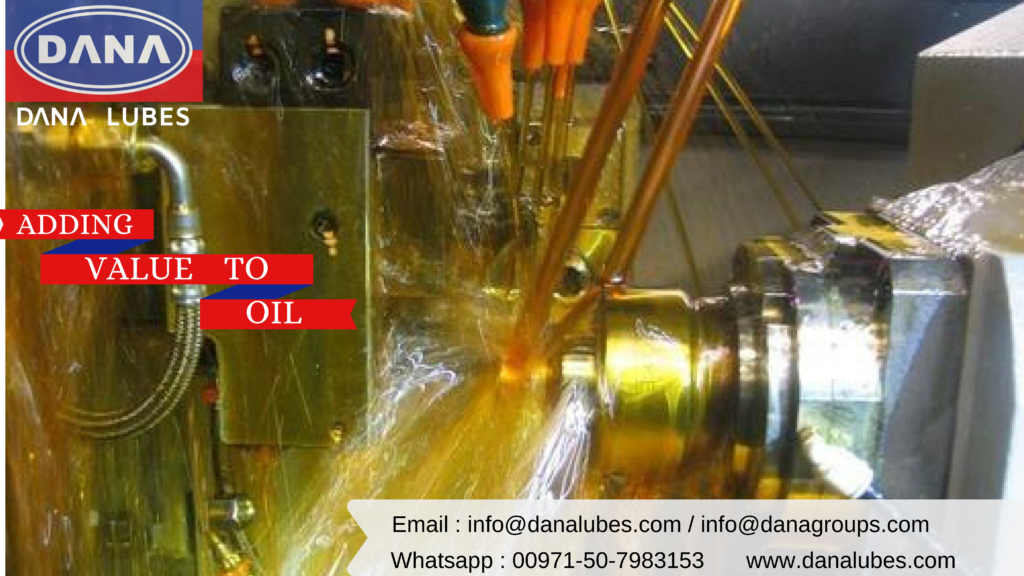
Straight-cutting oils don’t mix with water. Cutting oils are generally mixtures of mineral oil and animal, vegetable or marine oils to improve the wetting and lubricating properties. Sulfur, chlorine, and phosphorous compounds are sometimes added to improve the lubrication qualities of the fluid for extreme pressure applications. There are two main types of straight oils: active and inactive:
-
Inactive Straight Cutting Oils:
Inactive oils contain Sulphur that is very firmly attached to the oil. Mineral oils are an example of straight oils. Mineral oils provide excellent lubrication, but are not very good at heat dissipation
-
Active Straight Cutting Oils:
Active oils contain Sulphur that is not firmly attach to the oil, i.e. it is part of the oil molecule but is only weakly bonds to the hydro-carbon backbone. Thus the Sulphur is easily released during the machining operation to react with the work piece. These oils have good lubrication and cooling properties.
Gases:
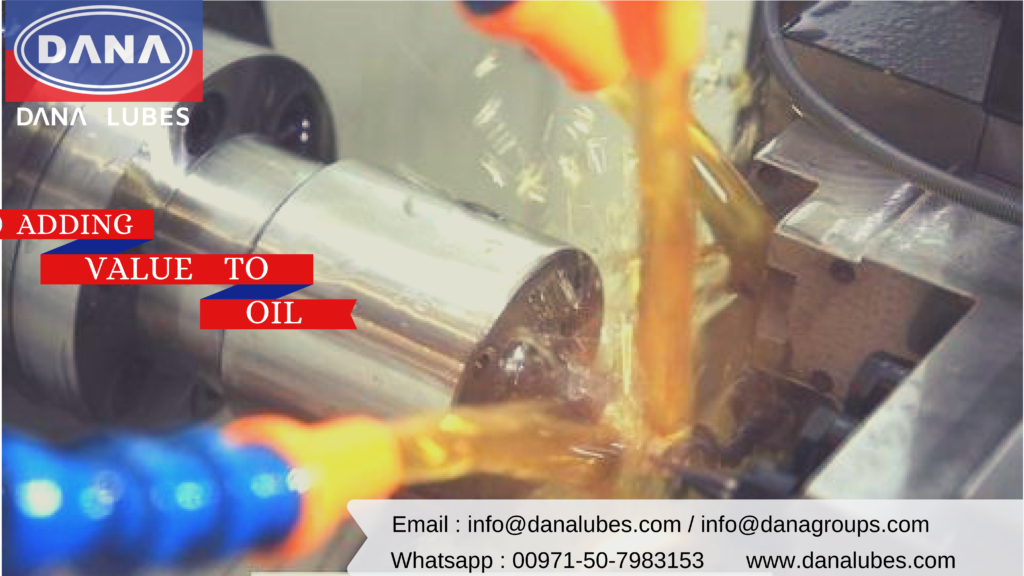
Cutting oils and water-miscible types of cutting fluids are the most widely uses. Compressed air, inert gases like carbon dioxide, Freon, and Nitrogen sometimes use. A vortex tube may use to apply gaseous lubricants or coolants. Using this tube, it is possible to apply the gases at a very low temperature and under medium pressure thereby facilitating a higher gas density and cooling and lubrication capability.
Paste or Solid Lubricants:
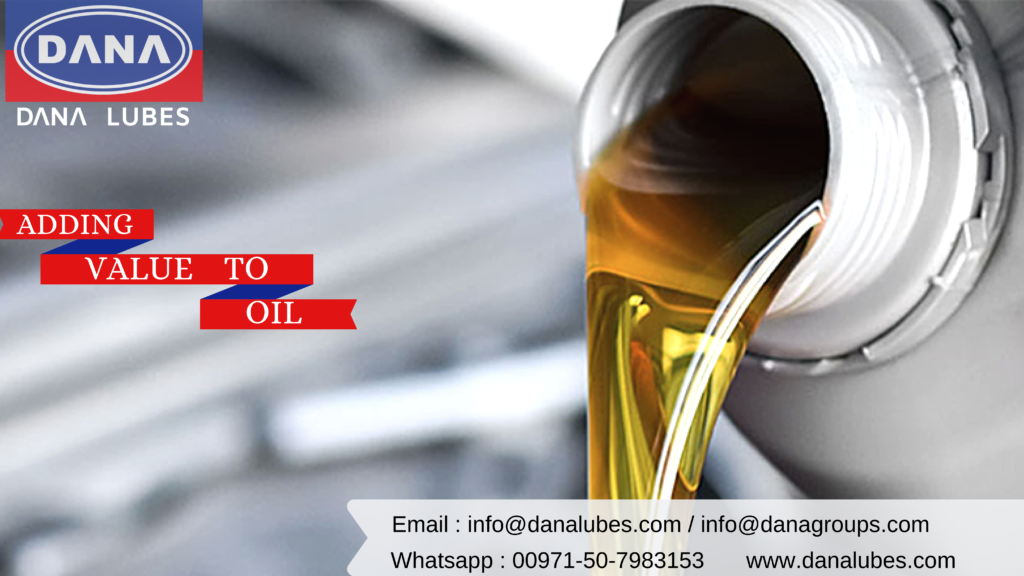
Waxes, pastes, soaps, and graphite are examples falling into this category. These generally apply directly to the workpiece or tool or in some cases impregnates directly into the tool, for example, the grinding wheel of a grinder. One example of a paste lubricant is a lard.
Application Of Cutting Fluids:
Many machine tools fit with a system for handling the cutting fluids. For near-dry machining a spray or mist type applicator uses. The position on the tool and workpiece where the lubricant/coolant plays a significant role in the temperatures and the temperature distribution that will result during metal cutting. The tool cools most effectively through directing the coolant to the accessible surfaces of the tool which are at the highest temperatures, as these are the surfaces from which the heat most rapidly removes and the parts of the tool most likely to suffer damage. It is helpful to know the temperature distribution in the tool for a rational approach to coolant application.
About DANA Lubricants Factory LLC, UAE:
DANA Lubricants Factory LLC( DANA LUBES) is leading manufacturer of Automotive Lubricant Engine Oils ( Huile Lubricants ), Industrial and Marine Lubricant Engine Oils, Agriculture engine oils, and grease of various Oils of Viscosities and API Performance levels namely SAE 30, SAE 40, SAE50 SC/SF/SJ/SL/SM/SN Gasoline Engine Oil, SAE 30/40/50/60/70 API CC/CF4/CH4/CI4/CJ4 Diesel Engine Oils and Multigrade engine oils namely SAE 15W40 Diesel Engine Oil API CH4/CI4/CJ4, SAE 20W50 SL/SM/SN Gasoline Engine Oil, Gear Oil SAE 90, SAE 140 GL-4, GL-5 Gear oils, Hydraulic Oils ISO VG 46,68,100,150, ATF Dexron I /II/ III Automatic Transmission & Clutch Fluid. DANA Lubricants Factory LLC is also manufacturing and filling Brake Fluid & Clutch Fluid, Radiator Coolant/ Antifreeze in all concentrations of 100 %, 50 %, 33%, 25 %, 10 %.All these coolants are glycol basis with Monoethylene Glycol(MEG ), DiEthylene Glycol ( DEG), and Tri Ethylene Glycol ( TEG).
CONTACT US:
DANA LUBRICANTS FACTORY LLC
PO Box 14761 , Ajman , UAE
Location : Opposite Hamriya Free Zone 2 ,
Gate number 3 , Ajman. U.A.E.
Tel : +971-4-2217273 Fax : + 971-4-2215940
Whatsapp : 00971-50-7983153
Email : info@danalubes.com / info@danagroups.com
